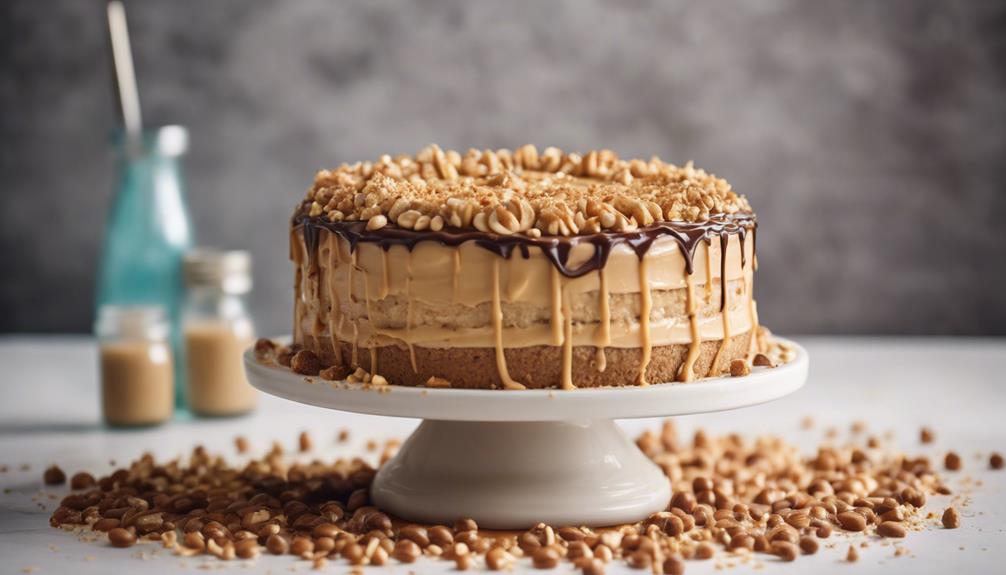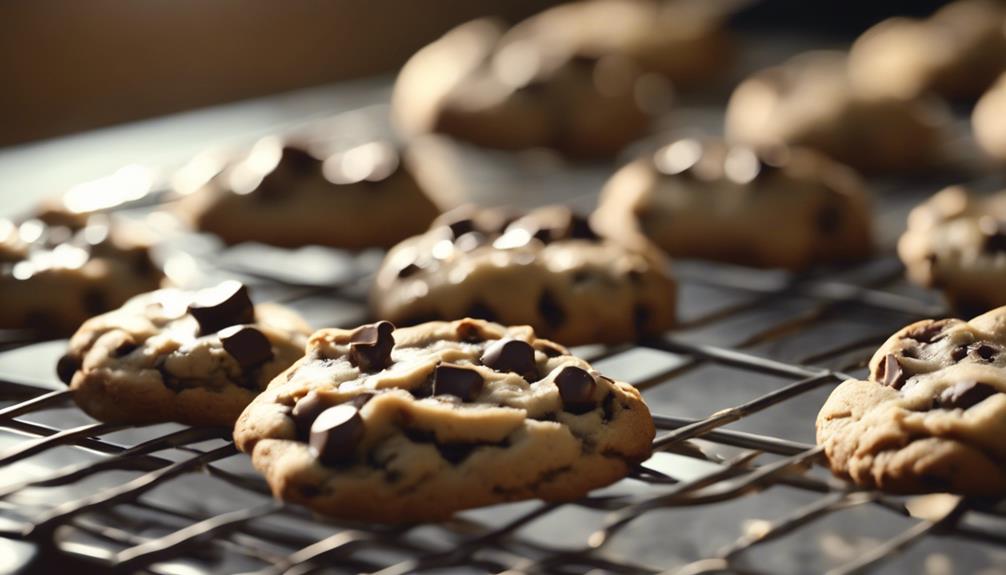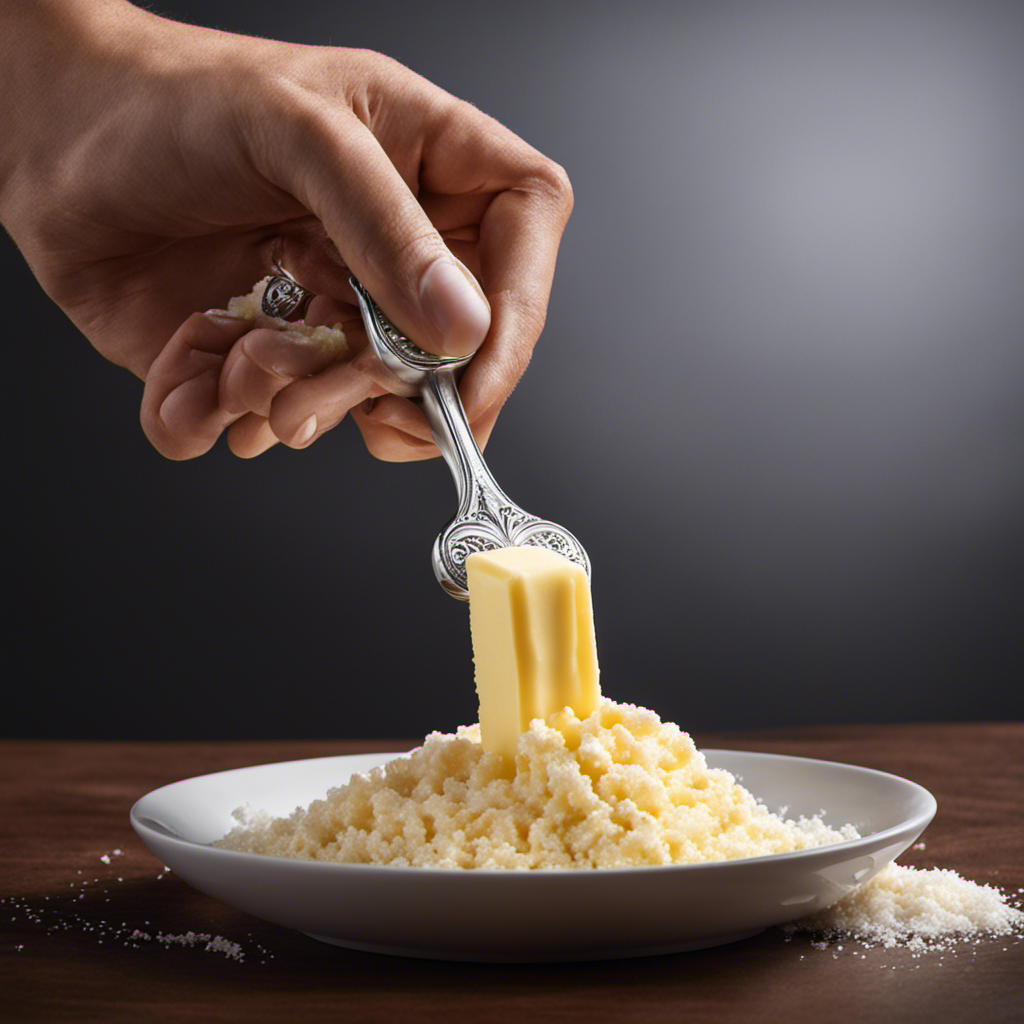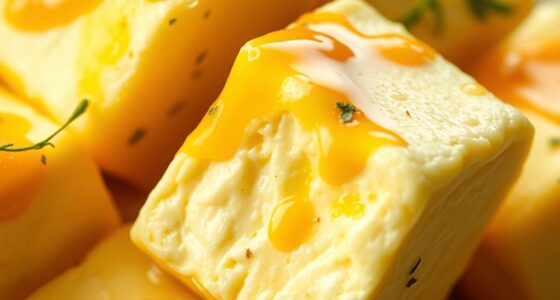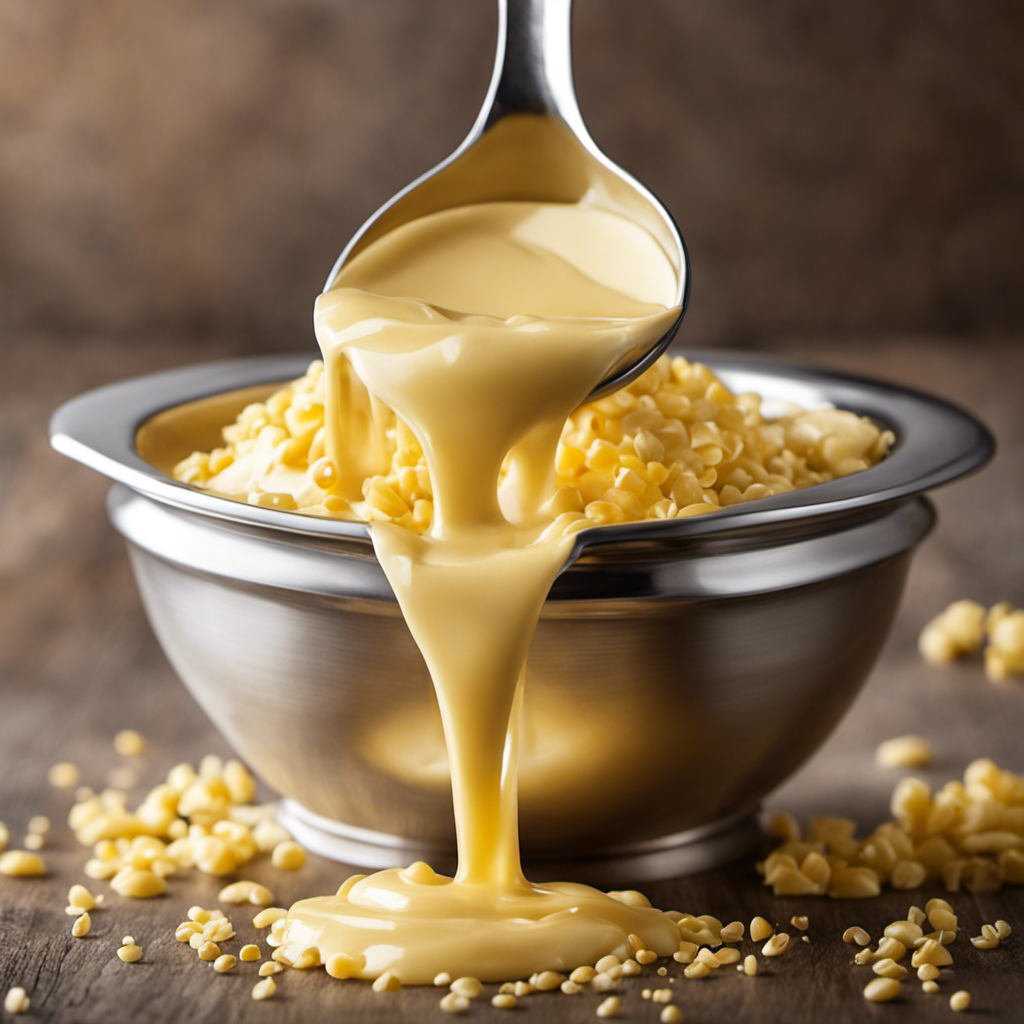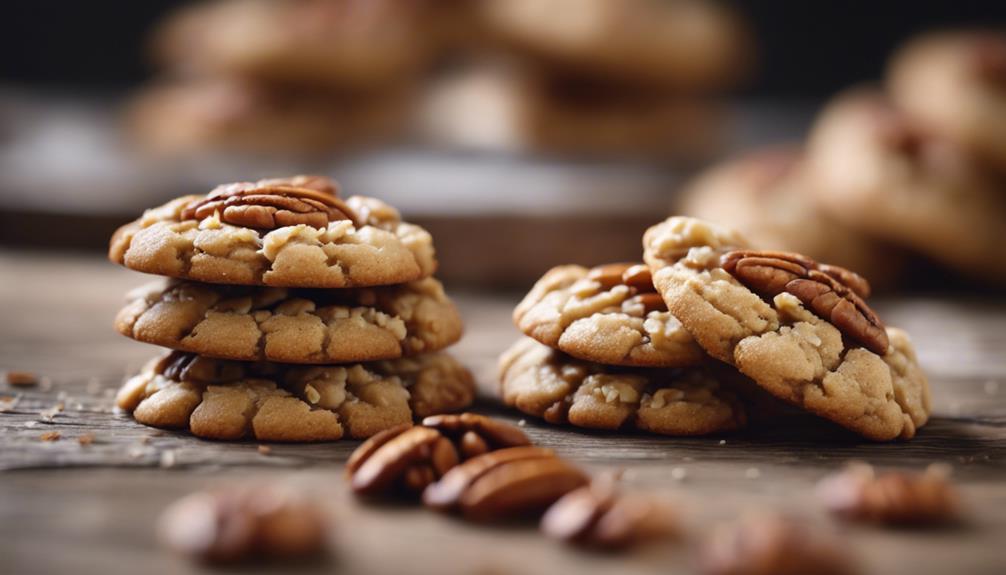Step into the irresistible domain of Nutty Cake with a divine Peanut Butter Cake recipe that will tantalize every dessert lover's taste buds. Whip up the batter, bake to golden perfection, and top it off with luscious Cream Cheese Frosting or decadent chocolate ganache for a delightful treat. Plunge into this buttery, nutty goodness and savor every last bite. Uncover the secrets to creating this delectable masterpiece and elevate your dessert game to new heights. Experiment with different baking options and modifications to suit your preferences. Get ready to embark on a flavor-filled journey like no other.
Key Takeaways
- Rich, creamy peanut butter cake recipe loved by dessert enthusiasts.
- Versatile baking options: 9×13 pan, sheet cake, loaf pans for variety.
- Moist sheet cake with honey glaze for added sweetness and texture.
- Cream cheese or chocolate ganache frosting options for customization.
- Allrecipes Test Kitchen approved, high-rated recipe with easy, step-by-step instructions.
Recipe Overview
For a delectable treat that will satisfy your sweet tooth, explore the details of this Peanut Butter Cake recipe. This recipe, submitted by Karen Pugh and last updated on November 17, 2023, has garnered a high rating of 4.4 out of 5 based on 143 reviews.
The Allrecipes Test Kitchen staff have given it their seal of approval, ensuring its deliciousness. The cake batter is designed to fit either four 6-inch pans or three 8 or 9-inch pans, offering flexibility in your baking choices.
When preparing this delightful cake, you can look forward to topping it with either Cream Cheese Frosting or a decadent chocolate ganache, catering to both Peanut Butter Lovers and those with a penchant for chocolate.
To enhance the flavor, the recipe calls for natural peanut butter, giving the cake an authentic nutty taste that shines through in every bite. Whether you choose to indulge in the rich Cream Cheese Frosting or the luscious chocolate ganache, this Peanut Butter Cake is sure to be a crowd-pleaser at any gathering.
Cake Preparation
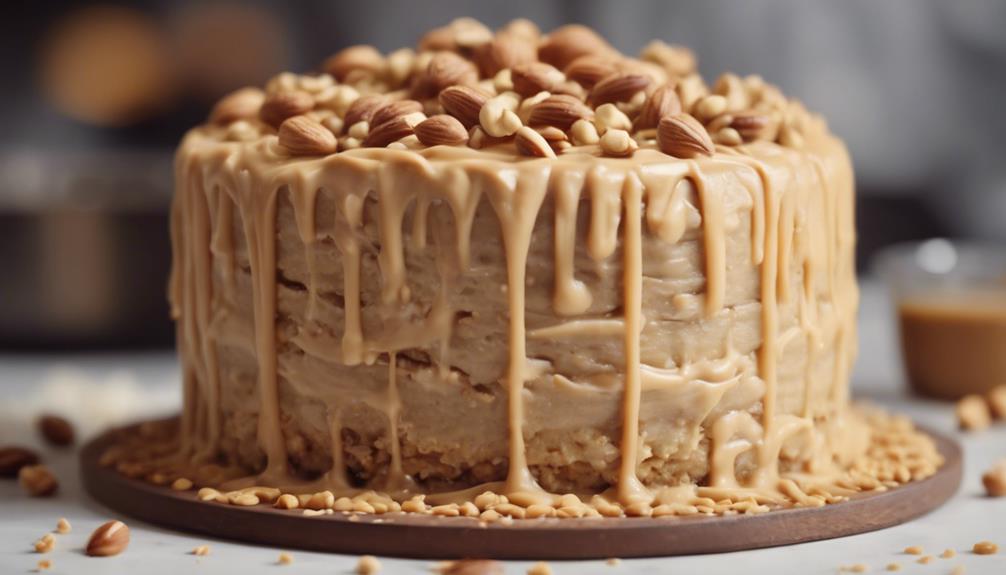
Whisk together the dry ingredients like flour, baking soda, baking powder, powdered peanut butter, and salt in a large bowl to kickstart the cake preparation process. This step guarantees that your cake will have a uniform distribution of leavening agents and flavors.
In a separate bowl, beat together the wet ingredients including butter, peanut butter, sugars, vanilla, eggs, and buttermilk until the mixture is smooth and well combined. Once your wet and dry mixtures are ready, gently fold them together until just combined to preserve the cake's texture.
Next, pour the batter into prepared pans, whether you're using 4 6-inch pans or 3 8/9-inch pans. Be sure to have greased the pans beforehand to avoid sticking.
Preheat your oven to 350°F and bake the cakes for approximately 25 minutes or until a toothpick inserted in the center comes out clean. After baking, allow the cakes to cool in the pans before transferring them to a wire rack for further cooling.
Icing Making
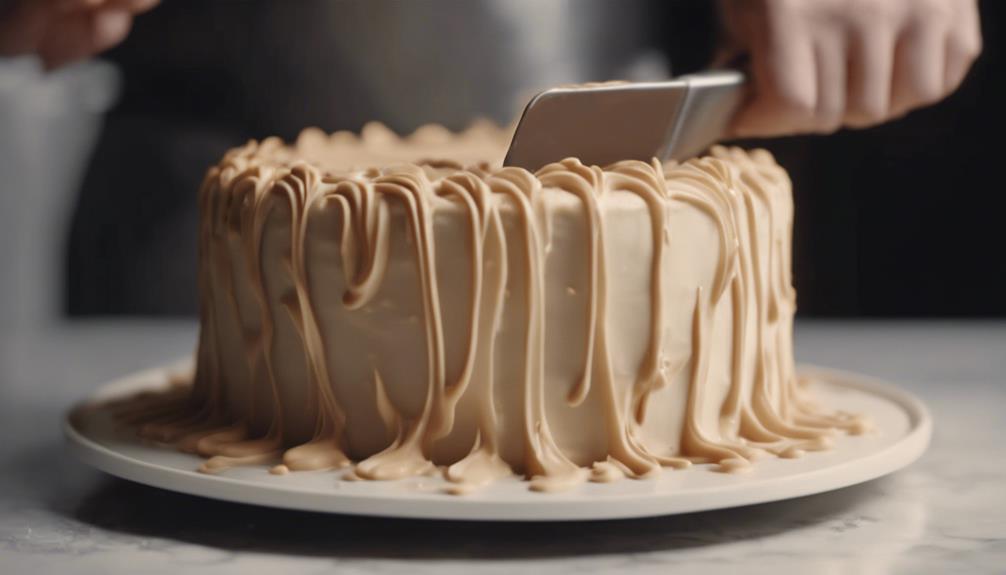
To create the icing for your peanut butter cake, start by melting butter and peanut butter in a saucepan over medium heat. Once the two are melted together smoothly, stir in milk and vanilla until well combined with the mixture.
Gradually whisk in confectioners sugar until you achieve a smooth consistency for your icing. The confectioners sugar adds a touch of sweetness and helps to thicken the icing.
When the icing is ready, pour it over the cake while it's still warm and spread it evenly to cover the entire surface. As the icing sets, it forms a sweet and creamy layer that complements the nutty flavor of the cake.
This rich icing enhances the overall flavor profile of the peanut butter cake, making it a decadent treat for dessert lovers. Enjoy the delicious combination of buttery and nutty flavors in every bite!
Nutritional Information

You'll find the calorie content breakdown and nutritional values of the ingredients in the peanut butter cake recipe.
Discover the benefits of the 2g of dietary fiber per serving.
Understanding these points will help you make informed decisions about enjoying this delicious dessert.
Calorie Content Breakdown
Understanding the nutritional breakdown of the peanut butter cake recipe is crucial for monitoring your calorie intake and macronutrient distribution.
Each serving of the cake contains approximately 565 calories, with 71g of carbohydrates, 9g of protein, and 30g of fat. This breakdown allows you to keep track of your calorie content and adjust your meal planning accordingly.
The cake also offers 2g of dietary fiber, aiding in digestion and contributing to overall gut health.
By being mindful of the calorie content and macronutrient composition of this dessert, you can make informed choices about portion sizes and balance it with the rest of your meals throughout the day.
Incorporating this information into your meal planning guarantees that you maintain a well-rounded diet while still indulging in a delicious treat like the nutty peanut butter cake.
Ingredient Nutritional Values
For a detailed breakdown of the nutritional values contributed by the specific ingredients in the peanut butter cake recipe, explore the following information:
- Peanut Butter: Peanut butter adds richness to the cake, contributing healthy fats, protein, and a nutty flavor. It also enhances the texture and moisture content of the cake.
- Butter: Butter provides flavor and helps create a tender crumb in the cake. It contributes to the overall richness and moistness of the dessert.
- Eggs: Eggs act as a binding agent in the cake, helping to hold the ingredients together while also contributing protein and essential nutrients. They play an essential role in the structure and texture of the final baked product.
Dietary Fiber Benefits
Including dietary fiber-rich foods like peanut butter cake in your diet can offer various health benefits, such as aiding digestion and promoting satiety. Peanut butter cake contains approximately 2g of dietary fiber per serving, which plays a crucial role in supporting digestive health. Dietary fiber helps regulate blood sugar levels, contributing to better overall health. Moreover, the fiber in this cake promotes a feeling of fullness, which can assist in weight management by reducing the likelihood of overeating. By incorporating fiber-rich foods like peanut butter cake into your diet, you also support your gut health, as fiber is essential for a healthy digestive system. Enhancing desserts with sources of dietary fiber can significantly increase their nutritional value, making them not only delicious but also beneficial for your well-being.
| Nutritional Benefits | Facts | |
|---|---|---|
| Digestion | Aids in digestion | Regulates blood sugar levels |
| Weight Management | Promotes satiety | Assists in weight management |
| Gut Health | Supports gut health | Enhances nutritional value |
Allrecipes Information
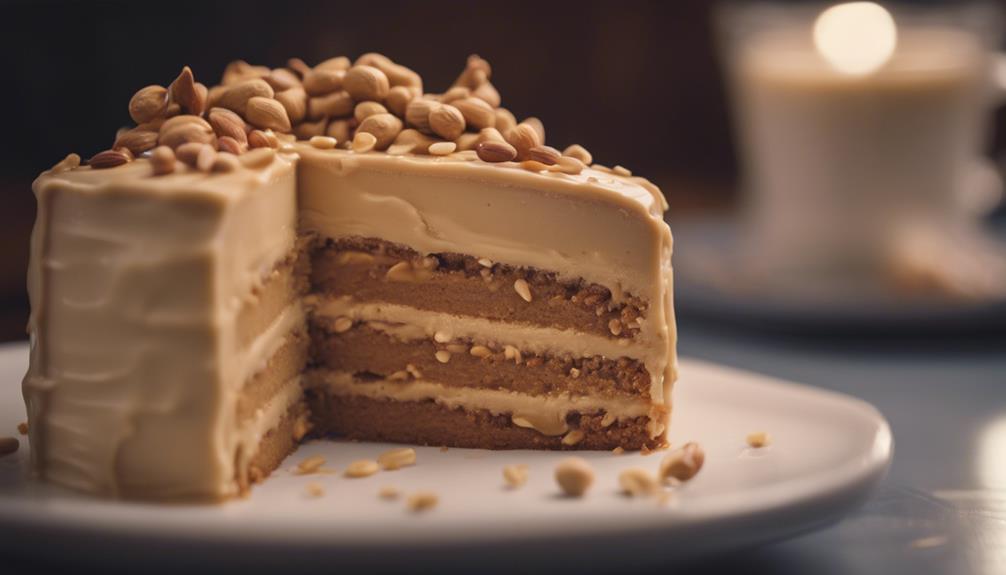
With a high rating of 4.4 out of 5, the Peanut Butter Cake recipe on Allrecipes has garnered 143 reviews and includes 44 photos for visual reference.
Here are some key facts about this popular dessert recipe submitted by Karen Pugh:
- Recipe Testing: The Peanut Butter Cake recipe was last updated on November 17, 2023, and has been tested by the Allrecipes Test Kitchen, ensuring its accuracy and deliciousness.
- User Interaction: Allrecipes allows users to save the Peanut Butter Cake recipe to their collection, create new collections, and sign up for the newsletter to stay updated on new recipes and cooking inspiration.
- Publisher: Allrecipes is part of the Dotdash Meredith publishing family, offering a wide array of recipes and culinary creativity for home cooks of all levels.
These details highlight the popularity and reliability of the Peanut Butter Cake recipe on Allrecipes, making it a go-to choice for dessert enthusiasts looking for a delicious treat.
Baking Options and Modifications
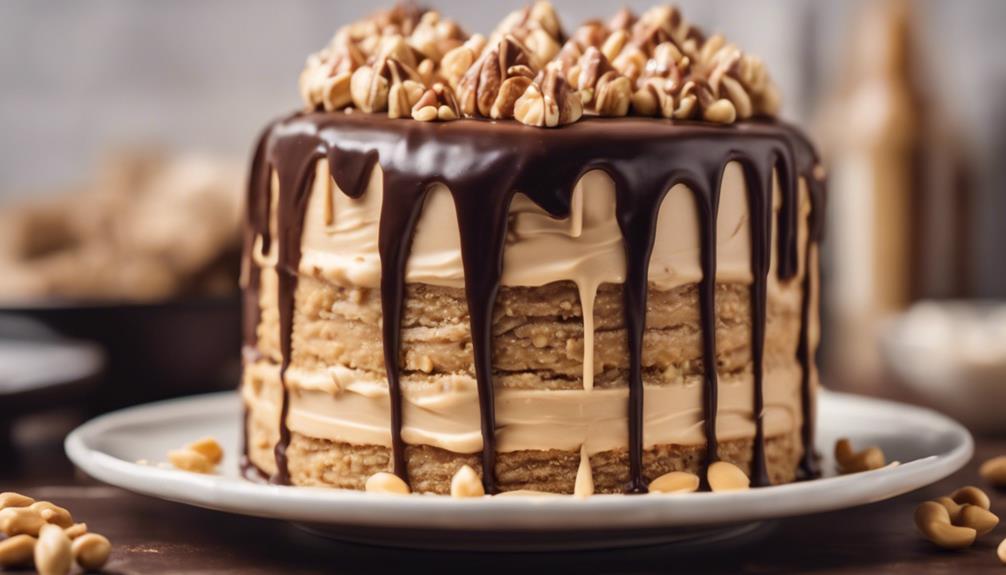
You can switch up your baking game by using a 9×13 pan for a lighter version or trying a sheet cake with a delicious honey glaze for added moisture.
Experiment with different baking options like loaf pans or single pan baking to change up the presentation of your peanut butter cake.
Don't forget to poke holes in the sheet cake and drizzle on the honey glaze for a unique twist on the classic dessert.
Baking Modifications
Consider baking the peanut butter cake in different pan sizes and styles to cater to your preferences and needs. Here are some baking modifications you can try:
- 9×13 Cake Pan:
Opt for a 9×13 cake pan for a lighter version of the peanut butter cake. This size will result in fewer calories and require less frosting, making it a great choice for those looking for a healthier option.
- Moist Sheet Cake with Honey Glaze:
For a more moist version of the peanut butter cake, bake it as a sheet cake. After baking, prepare a delicious honey glaze using honey, brown sugar, and butter. Poke holes in the cake and evenly drizzle the honey glaze over it for added flavor and moisture.
- Loaf Pans for Alternative Presentation:
Experiment with using loaf pans or other single pan baking options instead of traditional round cake pans. This alternative presentation can add a unique touch to your peanut butter cake and make it stand out.
Cake Presentation Ideas
For a creative twist on presenting your peanut butter cake, experiment with alternative baking options and modifications to enhance its visual appeal and uniqueness. Consider baking the cake in a 9×13 pan for a lighter option with less frosting, or opt for a sheet cake for a moist version. Drizzle a honey glaze made with honey, brown sugar, and butter over the sheet cake for added sweetness and flavor. To add a decorative touch, poke holes in the sheet cake before drizzling the glaze or frost it lightly with cream cheese frosting. Additionally, you can try baking the cake in loaf pans or using single pan baking options for different cake shapes and sizes. The table below outlines some cake presentation ideas to inspire your next baking adventure:
| Cake Pans | Peanut Butter Flavor | Frosting Options |
|---|---|---|
| 9×13 Pan | Moist and Light | Cream Cheese |
| Sheet Cake | Sweet Honey Glaze | Lightly Frosted |
| Loaf Pans | Varied Shapes | Customizable |
Frosting Instructions
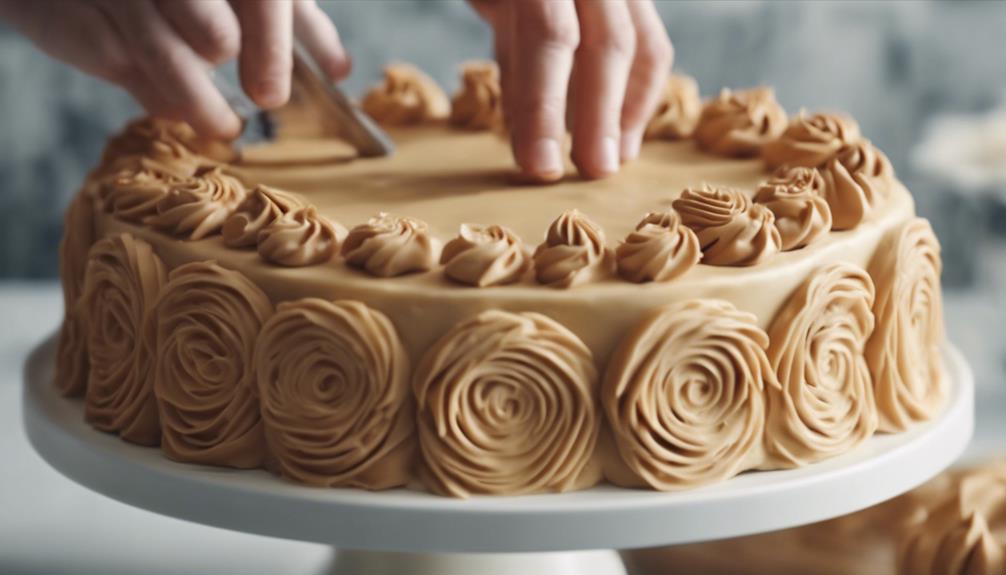
To prepare the frosting for the peanut butter cake, start by combining peanut butter and butter in a bowl, beating until smooth. Then, gradually add powdered sugar while continuously beating the mixture to guarantee a creamy texture. Next, adjust the frosting's consistency by gradually adding heavy cream until it reaches a spreadable state.
Here are some tips to guide you through the frosting process:
- Mixing: Beat the peanut butter and butter until completely smooth before adding the powdered sugar to avoid any lumps in your frosting.
- Consistency: Add heavy cream slowly to control the thickness of the frosting, ensuring it's easy to spread onto your cake.
- Variations: For a twist, incorporate cocoa powder into the mixture to create a delightful chocolate peanut butter frosting that pairs perfectly with the cake.
Remember to keep the frosting at room temperature for easy application, as refrigeration could cause it to stiffen.
Frequently Asked Questions
What Is a Mary Jane Cake?
A Mary Jane Cake is a delectable dessert comprising layers of peanut butter cake with creamy frosting. It boasts a rich, nutty flavor and moist consistency, making it a top choice for peanut butter enthusiasts.
What Is a Tom Selleck Cake?
Imagine a cake as bold as Tom Selleck's mustache! A Tom Selleck Cake is a rich peanut butter delight, known for its moist crumb and nutty flavor. Pair it with chocolate frosting for a decadent treat.
Why Is It Called Better Than Robert Redford Cake?
It's called Better Than Robert Redford Cake because it's so irresistibly delicious, earning a name that playfully nods to its exceptional taste. People love it more than the famous actor himself! You won't be disappointed.
Can You Substitute Peanut Butter for Oil in a Cake Mix?
You can totally swap peanut butter for oil in a cake mix! Just use a 1:1 ratio. Expect a richer, denser cake with that nutty taste. Play with creamy or chunky peanut butter for different textures.
Conclusion
To sum up, baking this nutty cake is a piece of cake! So go ahead and whip up this delicious peanut butter dessert to satisfy your sweet tooth cravings.
Remember, the proof is in the pudding – or in this scenario, the cake! So grab your ingredients, preheat your oven, and get ready to enjoy a slice of heaven in every bite.
Happy baking!
